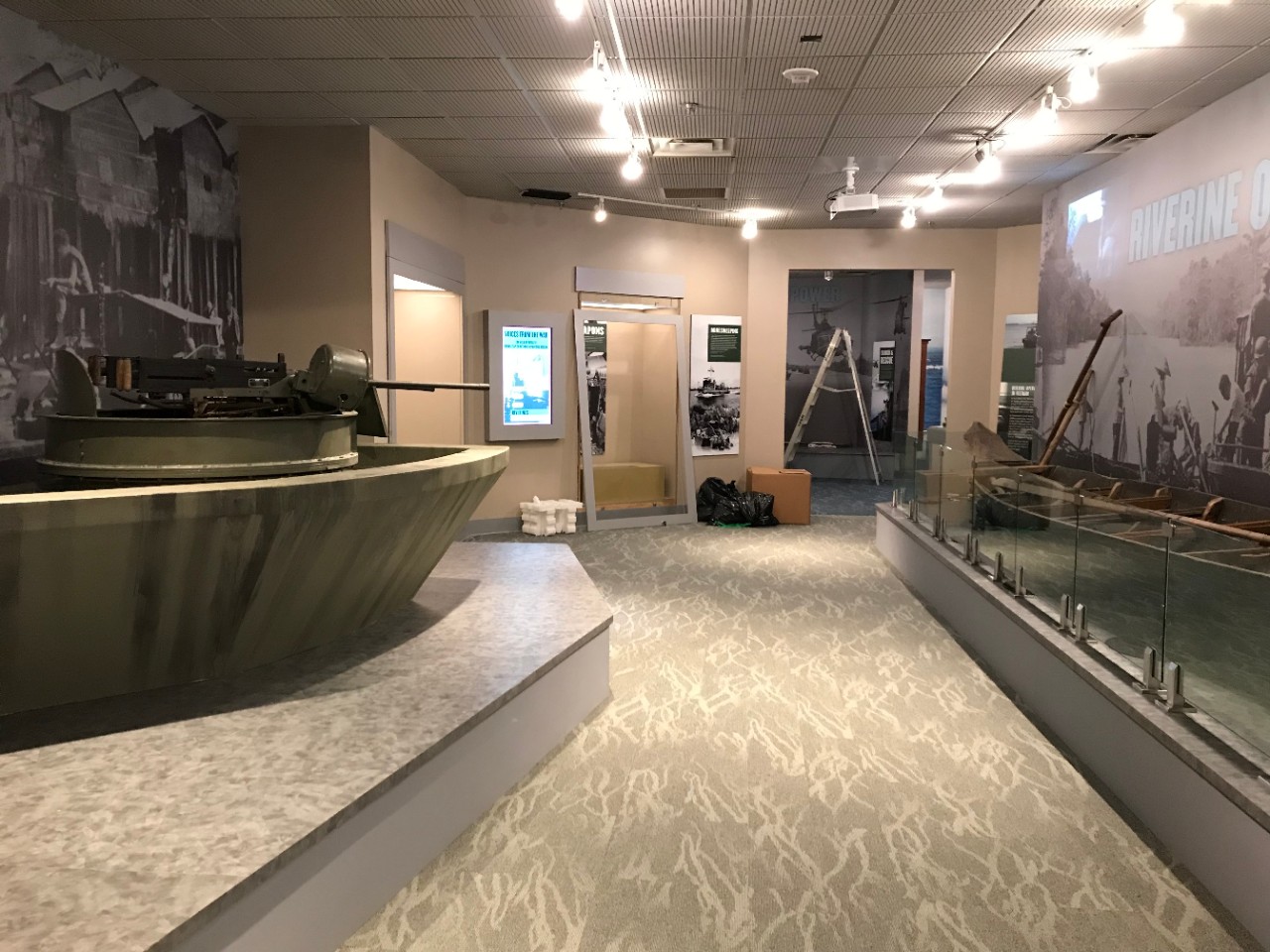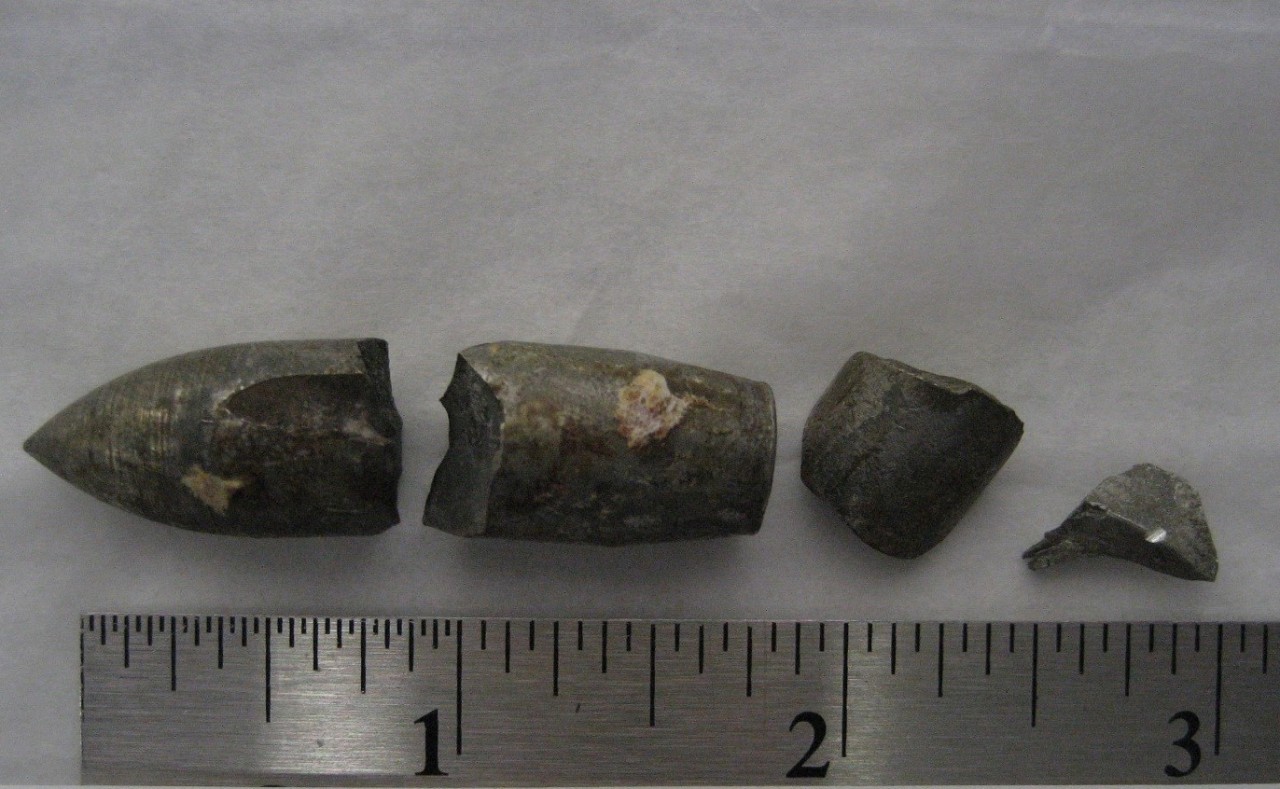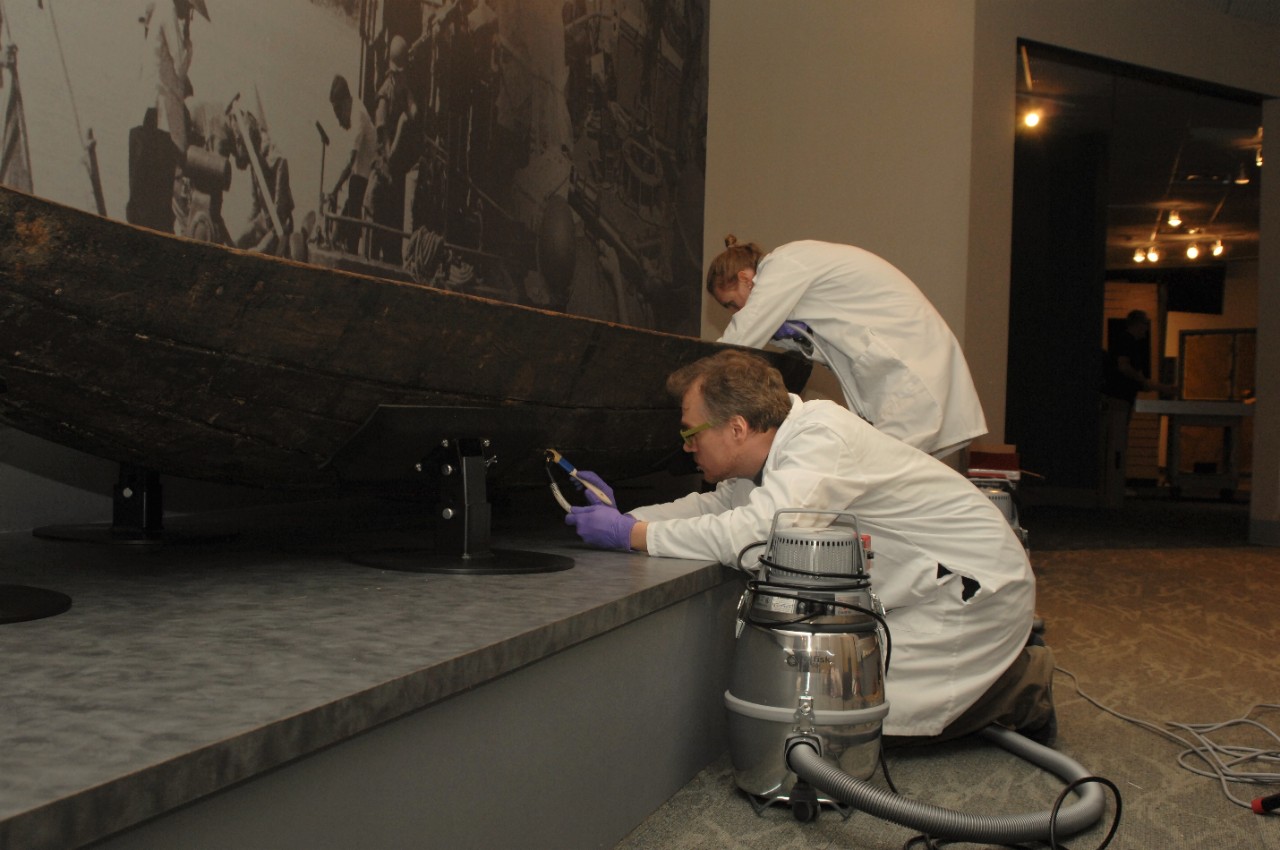By Max Lonzanida, Public Affairs Officer, Hampton Roads Naval Museum
The gallery of the Hampton Roads Naval Museum will re-open, Oct. 9, following a transformation of more than 4,700 sq. ft. into a new immersive exhibit, The Ten Thousand-Day War at Sea: The US Navy in Vietnam, 1950-1975.
The exhibit represents the first major renovation of their gallery since 1994. Preparations for the conversion began in April, and this week, with the addition of almost 130 artifacts, the staff is making final preparations to open their doors to the public.

Using the U.S. Navy's rich historical collections, multi-media presentations, and interactive components, visitors will experience the Navy’s pivotal role in the Vietnam War.
Choosing the right pieces to tell Navy’s Vietnam War story was critical to the exhibit’s creation. To guarantee that the visuals matched the museum’s intent, exhibit specialists collaborated with the Naval History and Heritage Command’s (NHHC) Curator Branch.
“We worked alongside with Hampton Roads Naval Museum staff to make certain we were telling a holistic story,” commented Jeff Bowdoin, Naval History and Heritage Command Curator Branch head. “Many people understand the riverine contributions to the war effort, though we must look beyond those operations. For instance the bullet fragment recovered from the USS Maddox represents an attack on a U.S. Navy destroyer that helped support the Gulf of Tonkin Resolution.”

One of the large artifacts visitors will have the opportunity to see is a 25-foot long sampan captured in 1968.
Sampans, flat-bottom boats that plied the waterways of the Mekong Delta transporting people and goods, were sometimes used to transport contraband weapons and supplies to aid the Viet Cong.
In 1968, riverine forces captured a 25-foot long sampan during Operation FLANKSPEED as it transported weapons, among other contraband. The Navy brought the open hulled sampan back to the U.S. and until now, it was in under management of NHHC’s Curator Branch.

Creating a new exhibit about the Vietnam War presented substantial opportunities for Hampton Roads Naval Museum to connect with Navy veterans. The museum recorded interviews with over forty-five Navy veterans of the war.
“Veterans of the Vietnam War did not receive a particularly hospitable homecoming,” said John Pentangelo, Hampton Roads Naval Museum director. “Many Americans wanted to forget the war and military service was not recognized the way it was before or since.”
Pentagelo also stated that the Navy’s contributions to the war are often overlooked in scholarship and popular culture. “While the artifacts were vital to the telling this story, the oral history program that preceded the exhibit fabrication really shaped the exhibit in a dynamic way,” he added, “Navy veterans were allowed to speak for themselves and provide visitors with the opportunity to make meaningful connections to our shared past.”
Hampton Roads Naval Museum will host a private ribbon cutting ceremony October 8 at 6pm. Media are invited to attend and should contact max.q.lonzanida@navy.mil for additional details. The exhibit opens to the public on October 9. During the three-year exhibit, The Hampton Roads Naval Museum aims to educate visitors about the U.S. Navy’s role in the Vietnam War.


